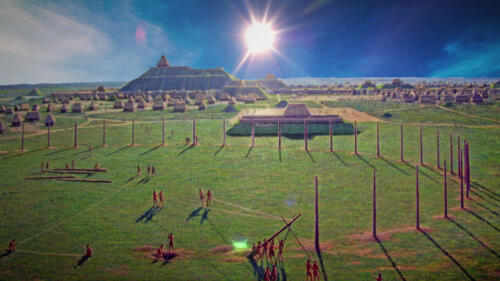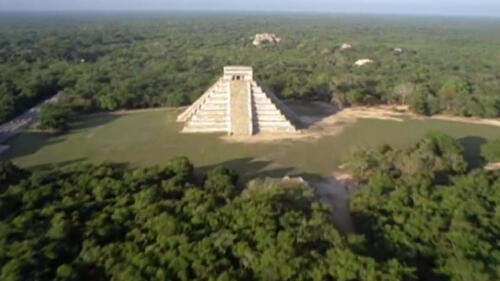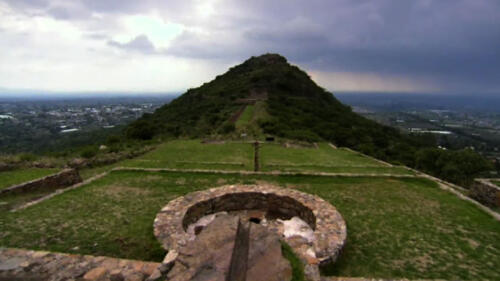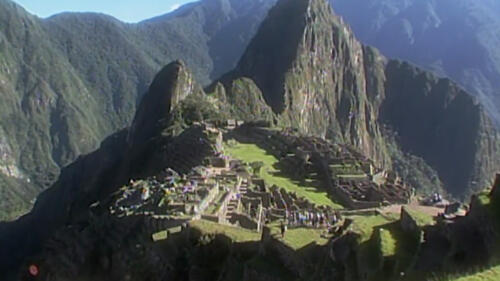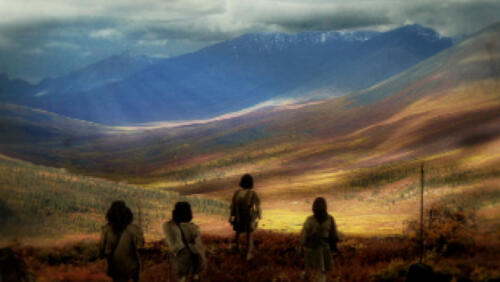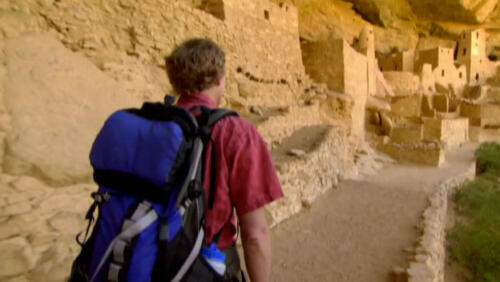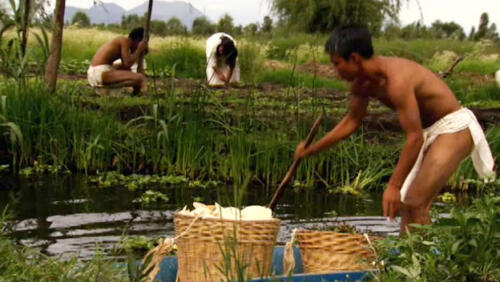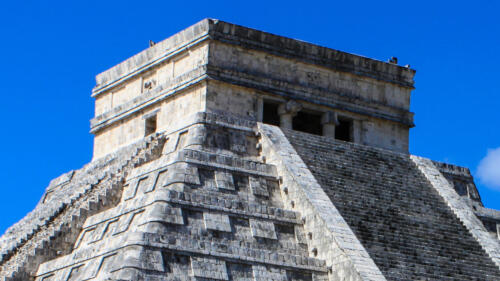Ancient Americas
Ancient North, South and Central America was home to sophisticated civilizations such as the Olmec, Maya and Aztec societies. The region hosts mysterious ruins like Chichen Itza, Teotihuacan, Serpent Mound, Tikal and the Nazca Lines.
Featured Overview
Well before Europeans arrived, North America contained a number of large cities that rivaled those an ocean away.
1:01m watch

Illustration by Eduardo Ramón Trejo. Photos from Getty Images.
Featured Overview
Well before Europeans arrived, North America contained a number of large cities that rivaled those an ocean away.
1:01m watch
Start Here

Caral was an architectural marvel—a 1,500-acre complex constructed by the oldest known civilization in the Western Hemisphere.

Three city-states joined in a fragile, but strategic alliance to wield tremendous power as the Aztec Empire.

Around A.D. 250, the Maya built flourishing cities. What triggered their decline?

These dietary staples were cultivated over thousands of years by Indigenous peoples of America.
Mayan Astronomy
Mayan Astronomy
Ancient Mayans studied the skies thousands of years before modern astronomical observatories.
2:05 watch

3 Key Empires

Olmec
Beginning around 1500 B.C., the Olmec civilization established itself in the present-day Mexican states of Veracruz and Tabasco, reaching its cultural and economic peak around 500 B.C. The Olmecs were noted for their superb stone carvings.
Explore All Related Topics

Inked-up mummies reveal that, far from a modern phenomenon, humans have been getting tattoos for thousands of years.

Despite the best efforts of amateur and professional archeologists, the ancient world has retained many of its secrets.

Architecture, agriculture, art and more first blossomed in these cultures.

The most important members of Inca society continued to be treated as living beings after death—and provided a powerful link to the gods.

Caral was an architectural marvel—a 1,500-acre complex constructed by the oldest known civilization in the Western Hemisphere.

Tenochtitlán, the capital city of the Aztec Empire, flourished between A.D. 1325 and 1521—but was defeated less than two years after the arrival of Spanish invaders led by Cortés.

Three city-states joined in a fragile, but strategic alliance to wield tremendous power as the Aztec Empire.

The huge drawings depicting human forms, birds and snakes may have served as sites for rituals and markers for travelers.
Well before Europeans arrived, North America contained a number of large cities that rivaled those an ocean away.
1:01m watch

The star of the Thanksgiving table was revered by the Maya.

Scientists have discovered new evidence of the ancient culture in South America.

In addition to slicing out the hearts of victims and spilling their blood on temple altars, the Aztecs likely also practiced a form of ritual cannibalism.

Archaeologists describe a technique that the ancient Rapa Nui may have used to leverage the hats on the island's giant stone statues.

Tikal is a complex of Mayan ruins in Guatemala, its 3,000 structures believed to be the remains of the powerful first millennium B.C. city of Yax Mutal.

Chichen Itza is a former Mayan city and current archeological site on Mexico's Yucatan Peninsula, known for pyramids like El Castillo among its preserved ruins.

The mysterious epidemic that devastated Aztecs may have been food poisoning.

Teotihuacan is an ancient Mesoamerican city famed for its pyramids. This area of modern-day Mexico was settled as early as 400 B.C. and named by the Aztecs.

The history of chocolate and its creation from cocoa beans can be traced from the xocolatl-loving Olmec, Maya and Aztecs of Mexico to the courts of Europe.

New DNA research suggests a deadly form of salmonella may have been behind the collapse of the Aztec civilization.

From the Maya to Greenland’s Vikings, check out six civilizations that seemingly disappeared without a trace.

Around A.D. 250, the Maya built flourishing cities. What triggered their decline?

Archaeologists hope a recently discovered stash of khipu, a system of strings and knots used by the ancient Inca civilization, will help them decode this mysterious mode of information storage.

The Inca Empire was a vast South American civilization that at its peak stretched over 2,500 miles. Overwhelmed by Spanish invaders, the Inca Empire collapsed in 1572.

People have been chewing gum, in various forms, since ancient times.
Ancient Mayans studied the skies thousands of years before modern astronomical observatories.
2:05m watch
Ancient Mayan structures have lasted thousands of years, and their designs continue to influence modern architecture.
1:35m watch
The Aztecs built an expansive system of aqueducts that supplied water for irrigation and bathing.
2:33m watch
The breathtaking Inca city of Machu Picchu was built atop the Andes mountains in Peru.
3:42m watch
In ancient Mexico, Chachapoyans and Incas battled for supremacy.
3:07m watch
The growth of the great Mayan civilization is as much a mystery as its disappearance.
1:36m watch
Though they could build complex suspension bridges, the Aztecs could not ward off diseases brought over by the Spanish.
1:20m watch
Paelo-Indians are believed to be the first humans to populate the Americas, around 10,000 B.C.
2:45m watch
The Mayans prospered for more than two thousand years. Today, their greatest city Palenque still stands.
2:10m watch
Did climate change force the Anasazi to abandon their settlement?
2:40m watch
Chinampas were a marvel of engineering that allowed the Aztecs to literally create new farming land where there was none before.
1:29m watch
Explore the origins of the Temple of Chichen Itza, a Mayan pyramid in modern-day Mexico that features several unique features, including an echo designed to sound like a bird call.
3:12m watch

Mexican and British researchers have uncovered a possible reason for the mysterious collapse of one of the Western Hemisphere's most advanced civilizations.

Dive into the world of America’s most beloved crustaceans.

Machu Picchu, an archeological site in the Andes Mountains of Peru, is believed to have been built in the 15th century as a royal estate for Incan leaders.

Between about 300 and 900 A.D., the Mayan were responsible for a number of remarkable scientific achievements–in astronomy, agriculture, engineering and communications.

The Maya, a civilization of Indigenous people in Central America, created a complex Mayan calendar and massive pyramids before their empire collapsed into ruins.

Famous Latin American pyramids, which date back to 1,000 B.C., include the Castillo at Chichén Itzá in the Yucatan and the Inca’s great temple at Cuzco in Peru.

The Aztecs ruled much of Mexico from the 13th century until their conquest by Hernán Cortés in 1521.
